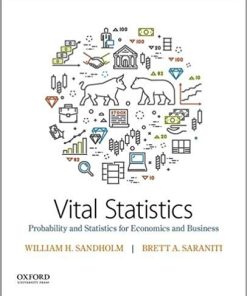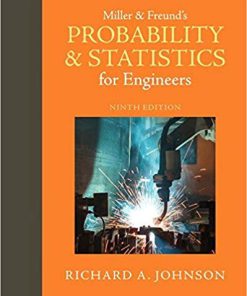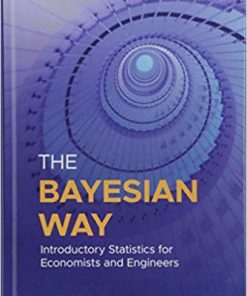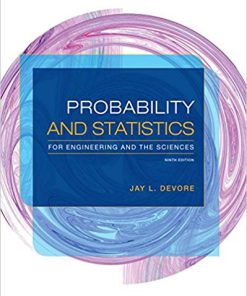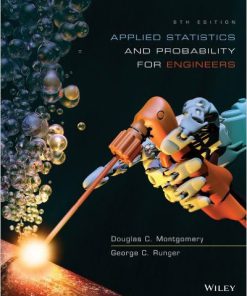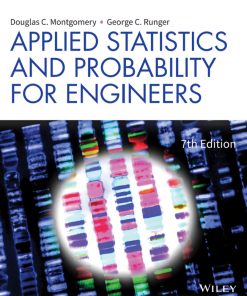(eBook PDF) Probability and Statistics for Economists
$50.00 Original price was: $50.00.$35.00Current price is: $35.00.
(eBook PDF) Probability and Statistics for Economists – Instant Download
(eBook PDF) Probability and Statistics for Economists – Digital Ebook – Instant Delivery Download
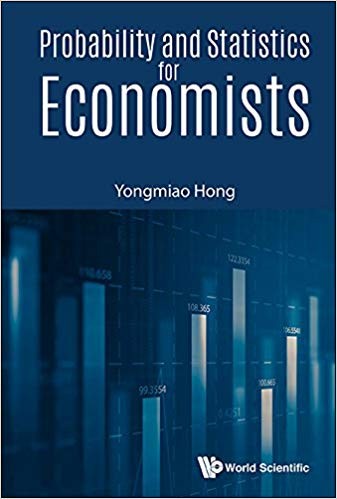
Product details:
- ISBN-10 : 0691235945
- ISBN-13 : 978-0691235943
- Author: Bruce E. Hansen
Probability theory is the quantitative language used to handle uncertainty and is the foundation of modern statistics. Probability and Statistics for Economists provides graduate and PhD students with an essential introduction to mathematical probability and statistical theory, which are the basis of the methods used in econometrics. This incisive textbook teaches fundamental concepts, emphasizes modern, real-world applications, and gives students an intuitive understanding of the mathematics that every economist needs to know.
Table contents:
1. Introduction to Probability and Statistics
1.1 Quantitative Analysis in Economics
1.2 Fundamental Axioms of Statistical Analysis in Economics
1.3 Role of Statistics in Economics
1.4 Limitation of Statistical Analysis in Economics
1.5 Conclusion
2. Foundation of Probability Theory
2.1 Random Experiments
2.2 Basic Concepts of Probability
2.3 Review of Set Theory
2.4 Fundamental Probability Laws
2.4.1 Interpretation of Probability
2.4.2 Basic Probability Laws
2.5 Methods of Counting
2.5.1 Permutations
2.5.2 Combinations
2.6 Conditional Probability
2.7 Bayes’ Theorem
2.8 Independence
2.9 Conclusion
3. Random Variables and Univariate Probability Distributions
3.1 Random Variables
3.2 Cumulative Distribution Function
3.3 Discrete Random Variables
3.4 Continuous Random Variables
3.5 Functions of a Random Variable
3.5.1 The Discrete Case
3.5.2 The Continuous Case
3.6 Mathematical Expectations
3.7 Moments
3.8 Quantiles
3.9 Moment Generating Function
3.10 Characteristic Function
3.11 Conclusion
4. Important Probability Distributions
4.1 Introduction
4.2 Discrete Probability Distributions
4.2.1 Bernoulli Distribution
4.2.2 Binomial Distribution
4.2.3 Negative Binomial Distribution
4.2.4 Geometric Distribution
4.2.5 Poisson Distribution
4.3 Continuous Probability Distributions
4.3.1 Uniform Distribution
4.3.2 Beta Distribution
4.3.3 Normal Distribution
4.3.4 Cauchy and Stable Distributions
4.3.5 Lognormal Distribution
4.3.6 Gamma and Generalized Gamma Distributions
4.3.7 Chi-Square Distribution
4.3.8 Exponential and Weibull Distributions
4.3.9 Double Exponential Distribution
4.4 Conclusion
5. Multivariate Probability Distributions
5.1 Random Vectors and Joint Probability Distributions
5.1.1 The Discrete Case
5.1.2 The Continuous Case
5.2 Marginal Distributions
5.2.1 The Discrete Case
5.2.2 The Continuous Case
5.3 Conditional Distributions
5.3.1 The Discrete Case
5.3.2 The Continuous Case
5.4 Independence
5.5 Bivariate Transformation
5.6 Bivariate Normal Distribution
5.7 Expectations and Covariance
5.8 Joint Moment Generating Function
5.9 Implications of Independence on Expectations
5.9.1 Independence and Moment Generating Functions
5.9.2 Independence and Uncorrelatedness
5.10 Conditional Expectations
5.11 Conclusion
6. Introduction to Sampling Theory
6.1 Population and Random Sample
6.2 The Sampling Distribution of the Sample Mean
6.3 The Sampling Distribution of the Sample Variance
6.4 Student’s t-Distribution
6.5 Snedecor’s F Distribution
6.6 Sufficient Statistics
6.7 Conclusion
7. Convergences and Limit Theorems
7.1 Limits and Orders of Magnitude: A Review
7.2 Motivation for Convergence Concepts
7.3 Convergence in Quadratic Mean and Lp-Convergence
7.4 Convergence in Probability
7.5 Almost Sure Convergence
7.6 Convergence in Distribution
7.7 Central Limit Theorems
7.8 Conclusion
8. Parameter Estimation and Evaluation
8.1 Population and Distribution Model
8.2 Maximum Likelihood Estimation
8.3 Asymptotic Properties of MLE
8.4 Method of Moments and Generalized Method of Moments
8.4.1 Method of Moments Estimation
8.4.2 Generalized Method of Moments Estimation
8.5 Asymptotic Properties of GMM
8.6 Mean Squared Error Criterion
8.7 Best Unbiased Estimators
8.8 Cramer-Rao Lower Bound — An Alternative Method
8.9 Conclusion
9. Hypothesis Testing
9.1 Introduction to Hypothesis Testing
9.2 Neyman-Pearson Lemma
9.3 Wald Test
9.4 Lagrange Multiplier (LM) Test
9.5 Likelihood Ratio Test
9.6 Illustrative Examples
9.6.1 Hypothesis Testing under the Bernoulli Distribution
9.6.2 Hypothesis Testing under the Normal Distribution
9.7 Conclusion
10. Classical Linear Regression
10.1 Classical Linear Regression Model
10.2 OLS Estimation
10.3 Goodness of Fit and Model Selection Criteria
10.4 Consistency and Efficiency of the OLS Estimator
10.5 Sampling Distribution of the OLS Estimator
10.6 Variance Estimator of the OLS Estimator
10.7 Hypothesis Testing
10.7.1 Student’s t-Test
10.7.2 F-Test
10.8 Applications and Important Examples
10.8.1 Testing for Joint Significance of All Explanatory Variables
10.8.2 Testing for Omitted Variables
10.8.3 Testing for Linear Restrictions
10.9 Generalized Least Squares (GLS) Estimation
10.10 Conclusion
11. Conclusion
Bibliography
Index
People also search:
probability and statistics for economists pdf
probability and statistics for economists hansen
probability and statistics for economists hansen pdf
probability and statistics for economists bruce hansen pdf
hansen probability and statistics for economists solutions pdf
You may also like…
Ebook-PDF
(eBook PDF) Introduction to Probability and Statistics for Engineers and Scientists 5th Edition





